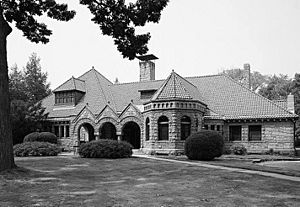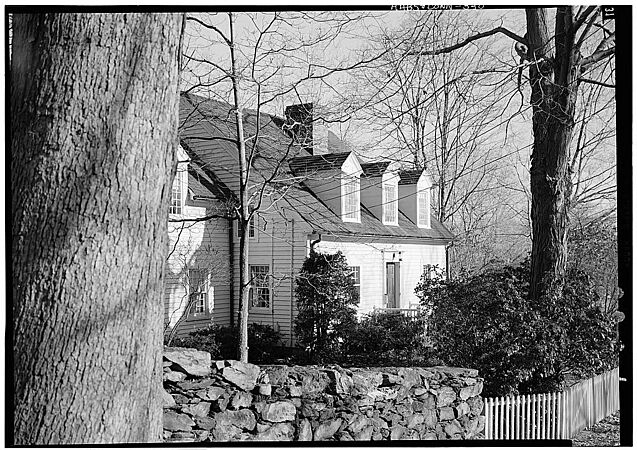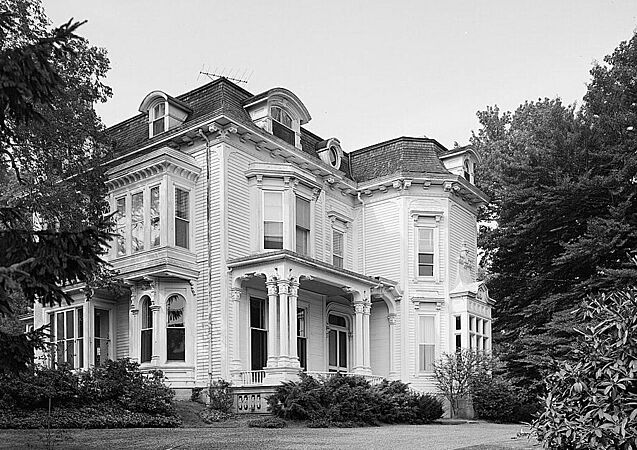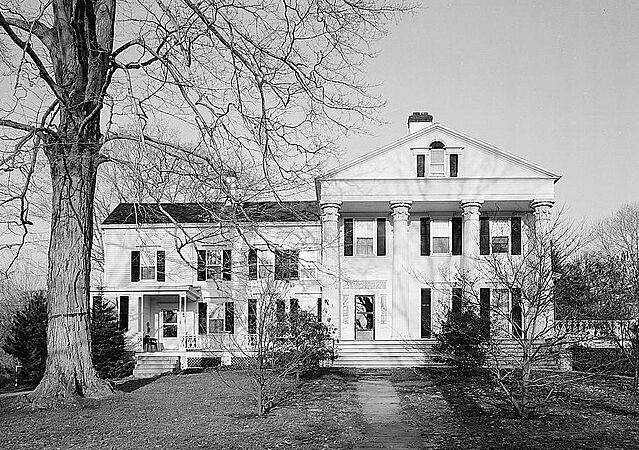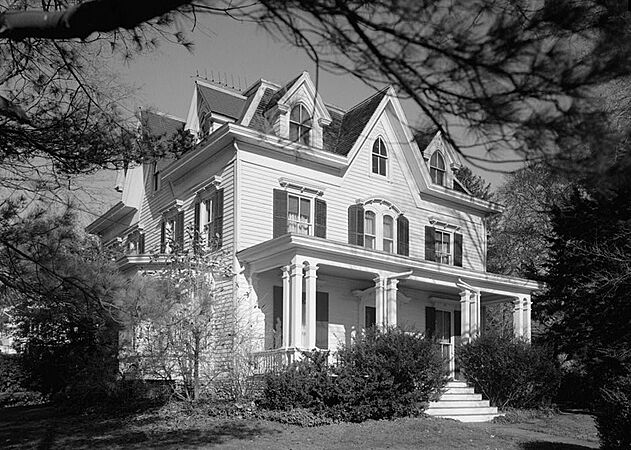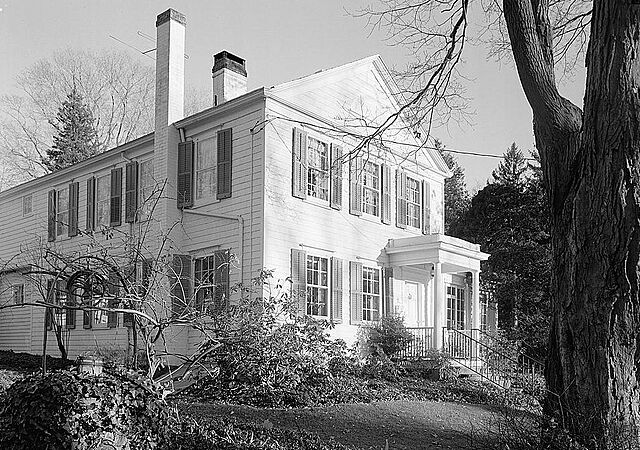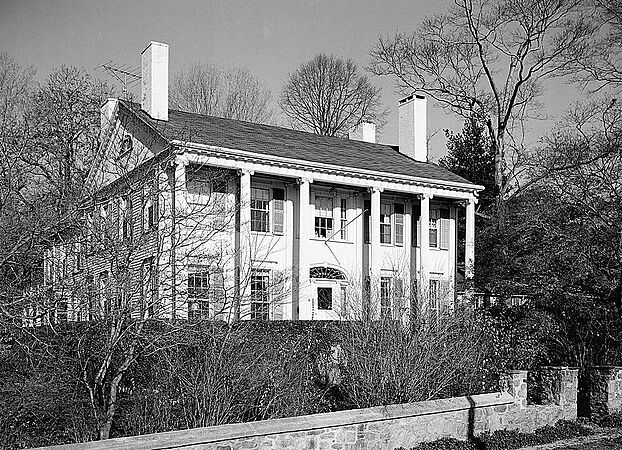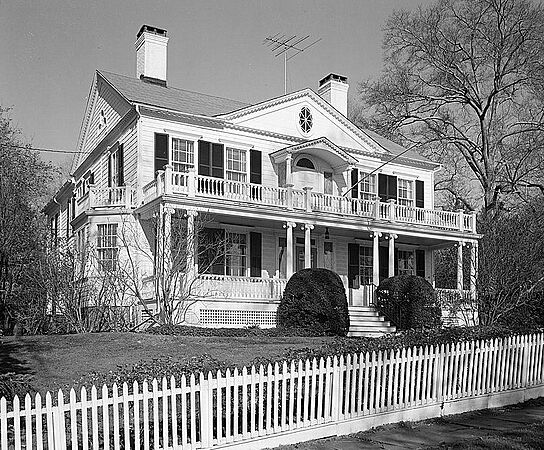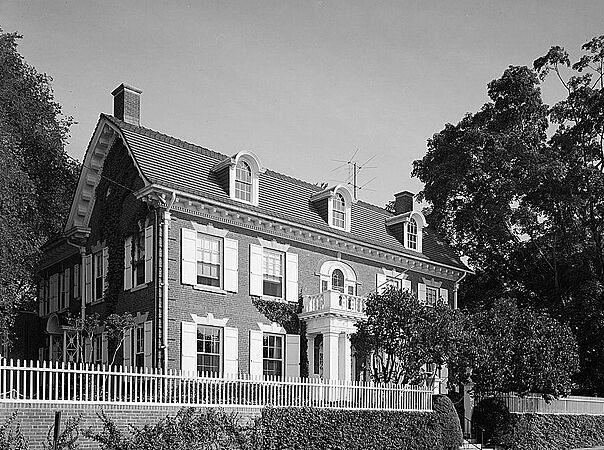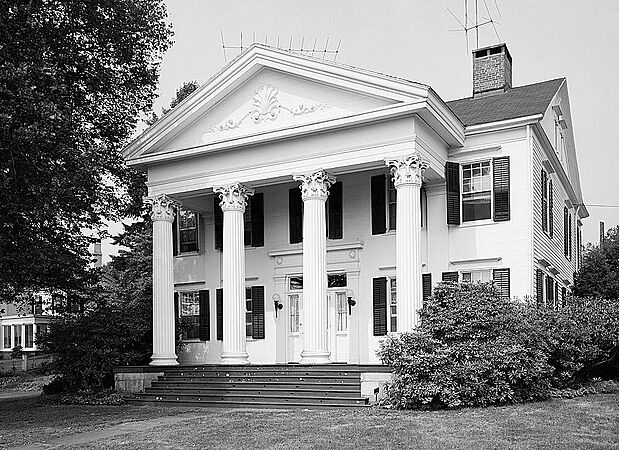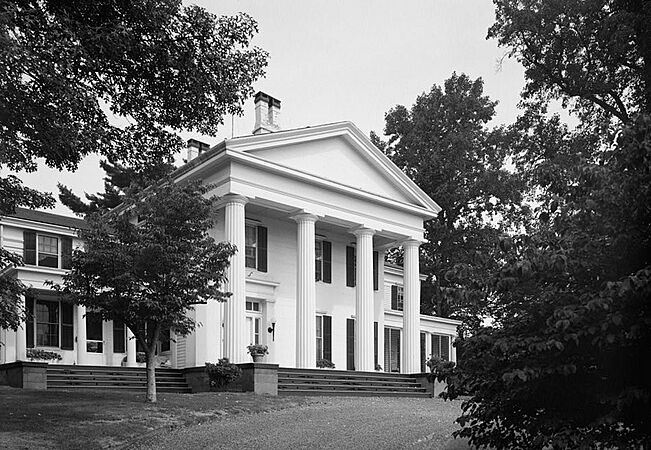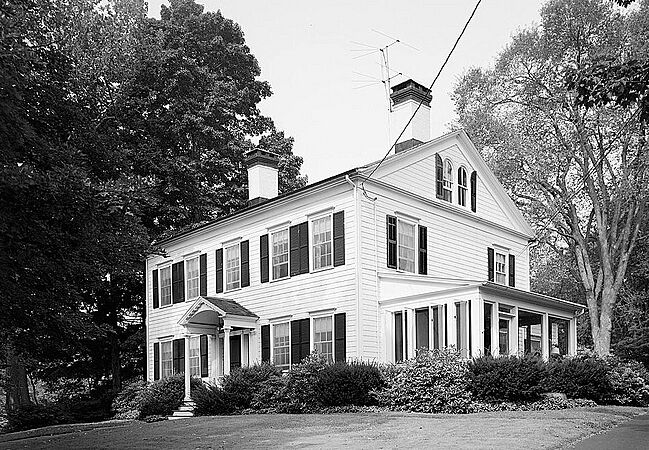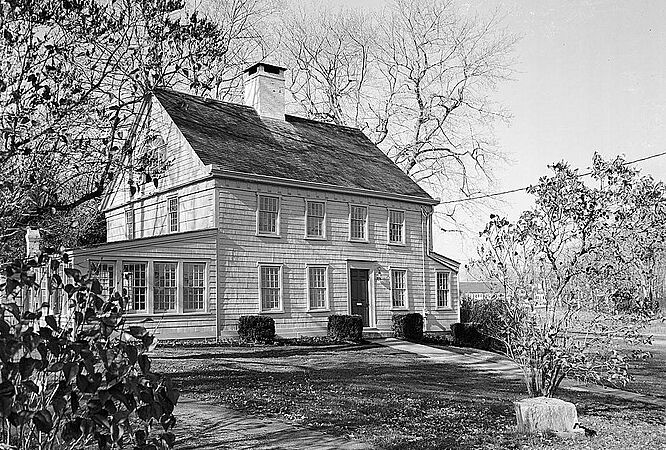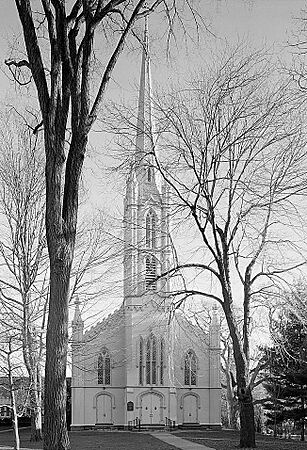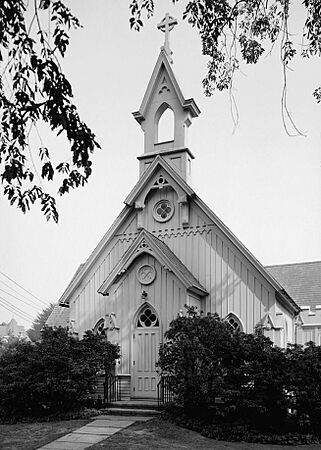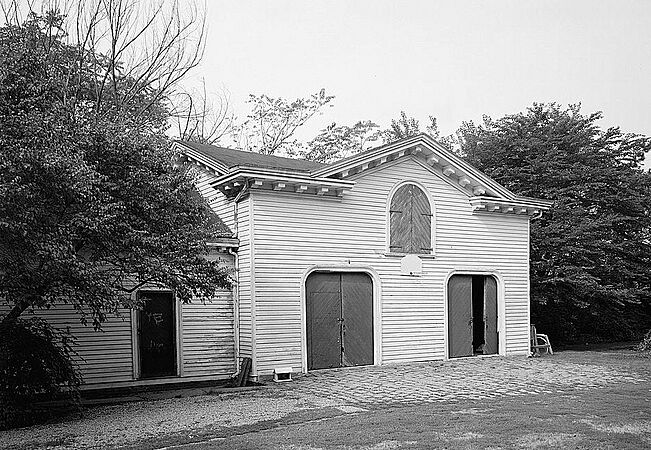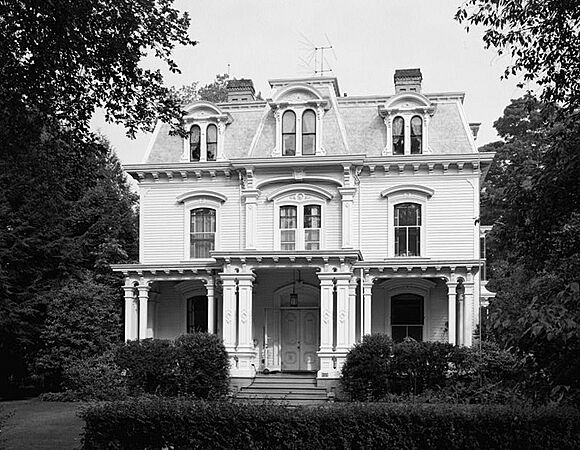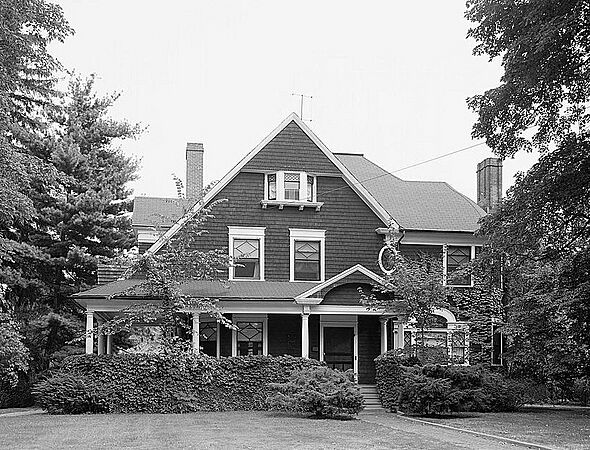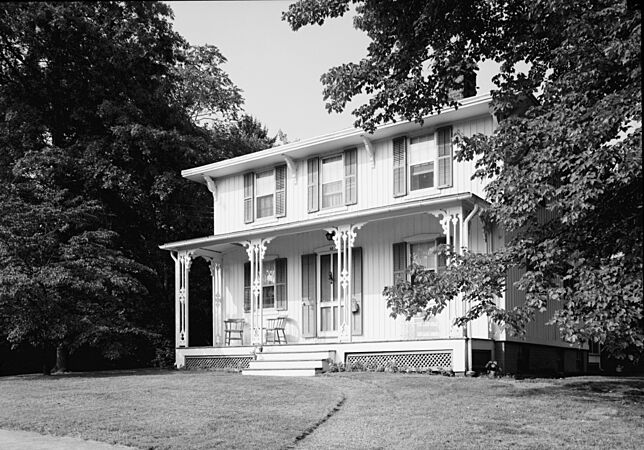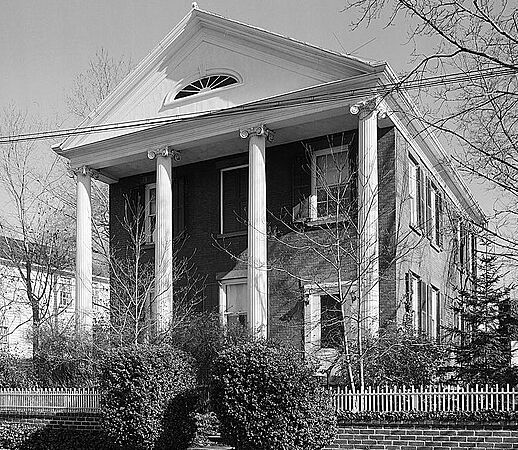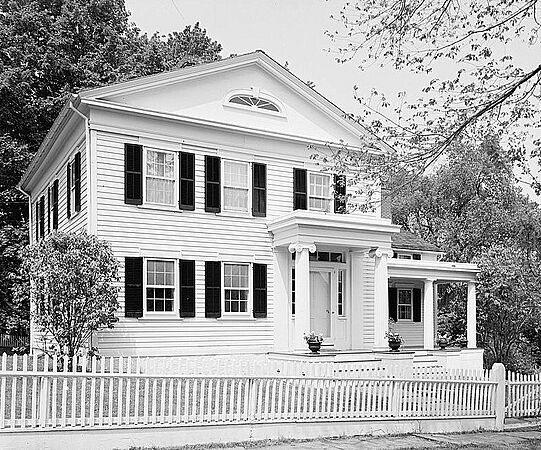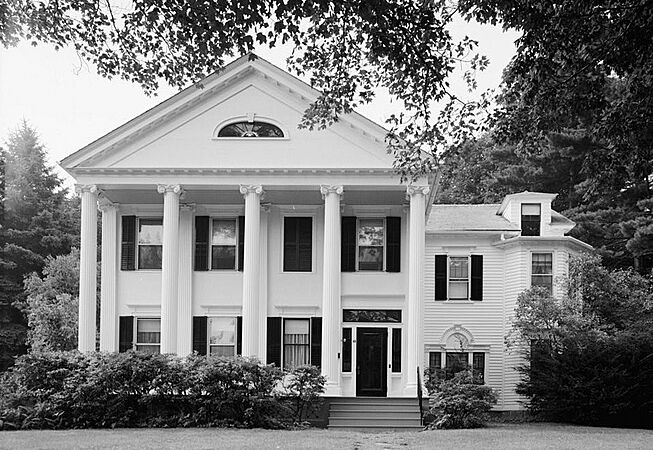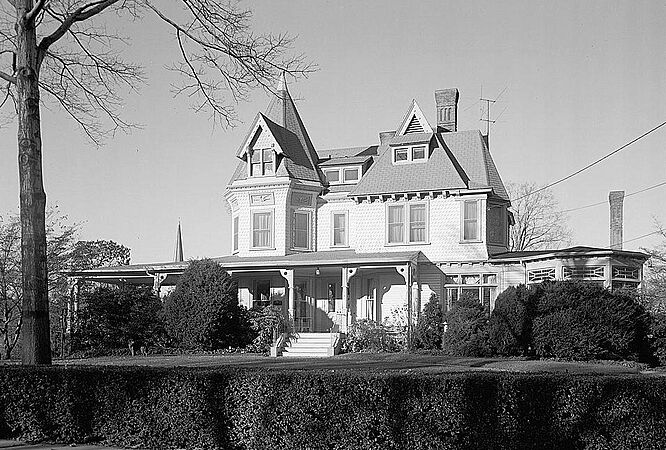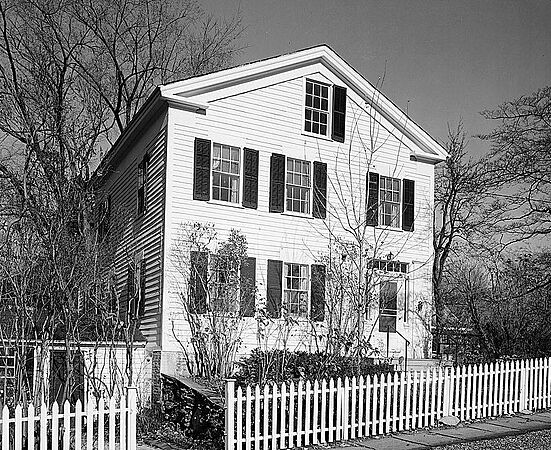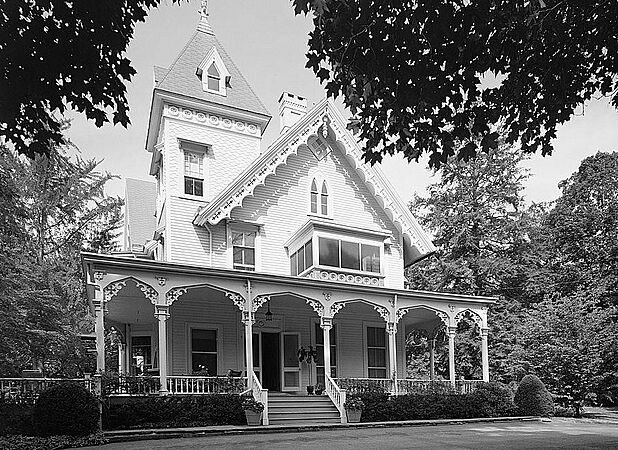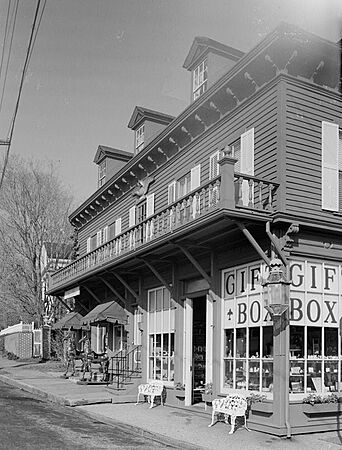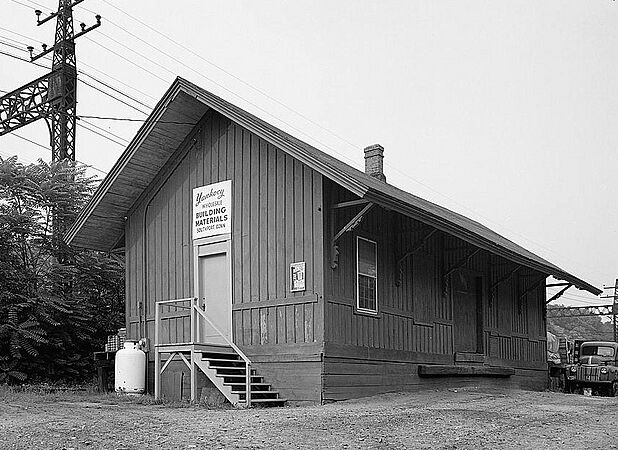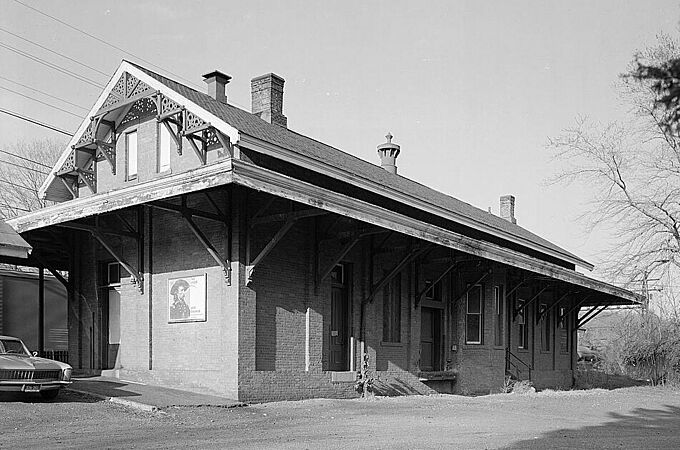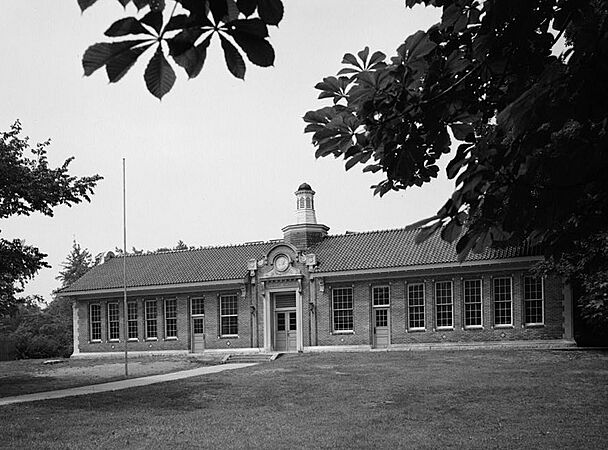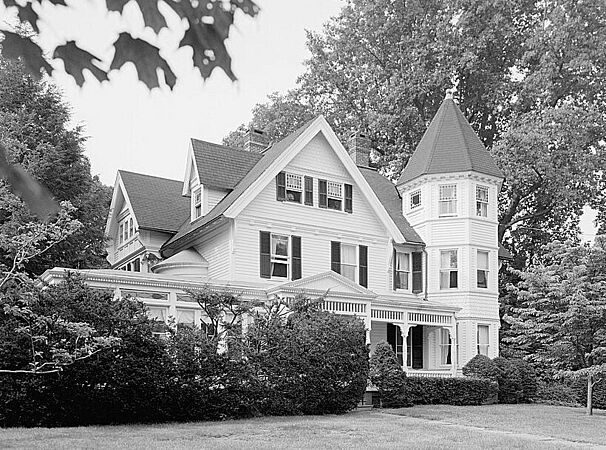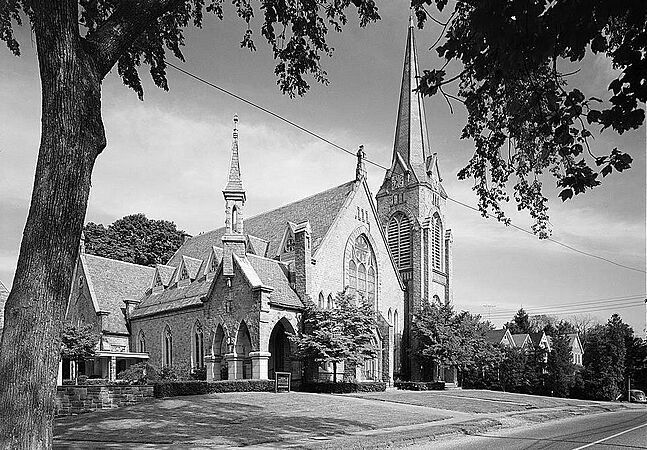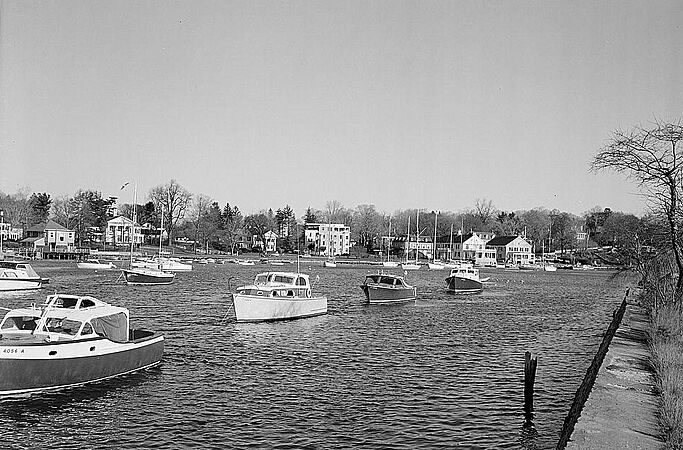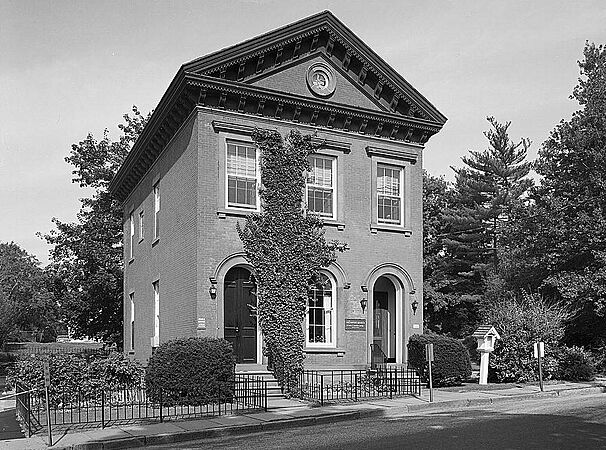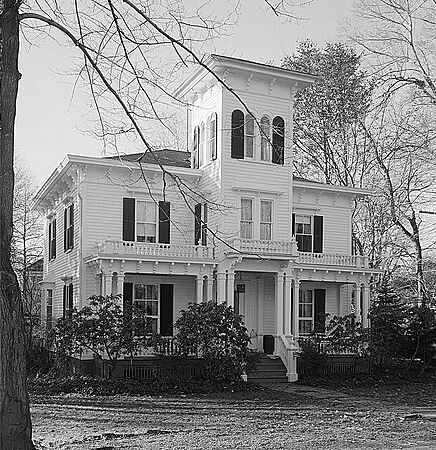Southport Historic District (Fairfield, Connecticut) facts for kids
Quick facts for kids |
|
|
Southport Historic District
|
|
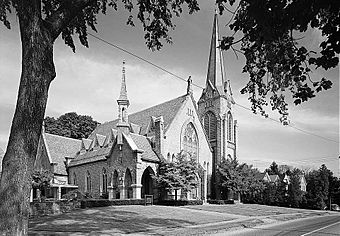
Southport Congregational Church, 1966
|
|
| Location | Roughly bounded by Southport Harbor, RR, Old South Rd. and Rose Hill Rd., Fairfield, Connecticut |
|---|---|
| Area | 225 acres (91 ha) |
| Built | 1800 |
| Architectural style | Greek Revival, Romanesque, Federal |
| NRHP reference No. | 71000898 |
| Added to NRHP | March 24, 1971 |
The Southport Historic District is a special area in Fairfield, Connecticut. It covers about 225 acres (91 ha) and is listed on the National Register of Historic Places. This means it's recognized for its important history and old buildings.
The district helps protect a part of the modern neighborhood of Southport, Connecticut. Sadly, the British burned almost all of Southport's buildings in 1779. Because of this, only one house built before that time still stands today. It's called the Meeker House, located at 824 Harbor Road.
Contents
Exploring the Southport Historic District
This historic area is bordered by the Metro-North Railroad tracks to the north. To the south, you'll find the Mill River and Southport Harbor. Old South Road forms the western edge, and Rose Hill Road is on the east.
The district includes some homes on both sides of Old South Road and Rose Hill Road. However, it doesn't include the shops and factories along Pequot Avenue. This protected area is about a quarter of what Southport used to be.
Protecting Old Buildings
A local group in Fairfield helps protect the buildings in this district. If someone wants to change a property, they need to get approval first. This helps keep the historic look of the area.
For example, a homeowner once put a very large sculpture on their lawn. The local group said it needed approval. The case even went to the U.S. Supreme Court! The court agreed that the sculpture needed permission. The sculpture was later moved to a museum.
Why This Area Is Special
In 1970, the district was recognized for its importance. It was once a busy center for trade and business in Fairfield. Its history shows how many New England port towns grew after the American Revolutionary War.
Most buildings in the district were built after 1779. They show off beautiful styles like Greek Revival and Victorian. These homes often belonged to wealthy people. Their money came from shipping, banking, and other businesses.
The district has over 150 important buildings. Here are a few examples:
- 750 Harbor Road: This Greek Revival house belonged to Oliver Perry, a notable person. It has a triangular roof (pediment) and four large columns.
- 780 Harbor Road: Built in 1830, this is a Federal style house. It was the home of Walter Perry III.
- 824 Harbor Road: This is the Meeker House. It was built before 1766 and is the only known building to survive the 1779 burning.
- 72 Willow Street: This was the childhood home of Joseph Sheffield. He later founded the Rock Island Railroad.
- 104 Old South Road: This house belonged to Paschal Sheffield. He was a privateer (like a legal pirate) for Argentina during its fight for independence.
- 187 Westway Road: This house, called a saltbox, was built before 1818. It's known for the "Dimon Oak" tree. In 1970, this tree was nearly 100 feet tall and over 260 years old!
- 95 Main Street: Built around 1827, this building served as a school, a church, and even a town hall. It's now a home.
- 798 Harbor Road: This building was a store in the 1850s. Later, it was a club called "Bachelor's Comfort, and Married Men's Relief." During World War I, it helped with British war relief. It then became the first clubhouse for the Pequot Yacht Club.
- Pequot Library: Located at 720 Pequot Avenue, this is another important building.
Harbor Road Buildings
Harbor Road runs along the harbor, and all of it is part of the historic district.
Pequot Road Buildings
Some parts of Pequot Road are in the district. Newer shops and businesses are not included.
More Historic Buildings
Here are more images of buildings found within the Southport Historic District.




